The Allier River |
The Allier in Luc appears as a natural jewel in the heart of a preserved mountainous landscape. The river, still young and impetuous at this point, winds through gorges and lush valleys, offering breathtaking panoramas. The banks are often lined with dense riparian vegetation, composed of willows and alders, providing an essential refuge for local wildlife. Here, one can observe the discreet and protected European otter, as well as various species of aquatic birds. The clear waters host a remarkable population of wild brown trout, reflecting the excellent quality of the environment. The flora is typical of mid-mountain areas, with meadows and forests of beeches and firs climbing the surrounding slopes, enhancing the wild beauty of the site.
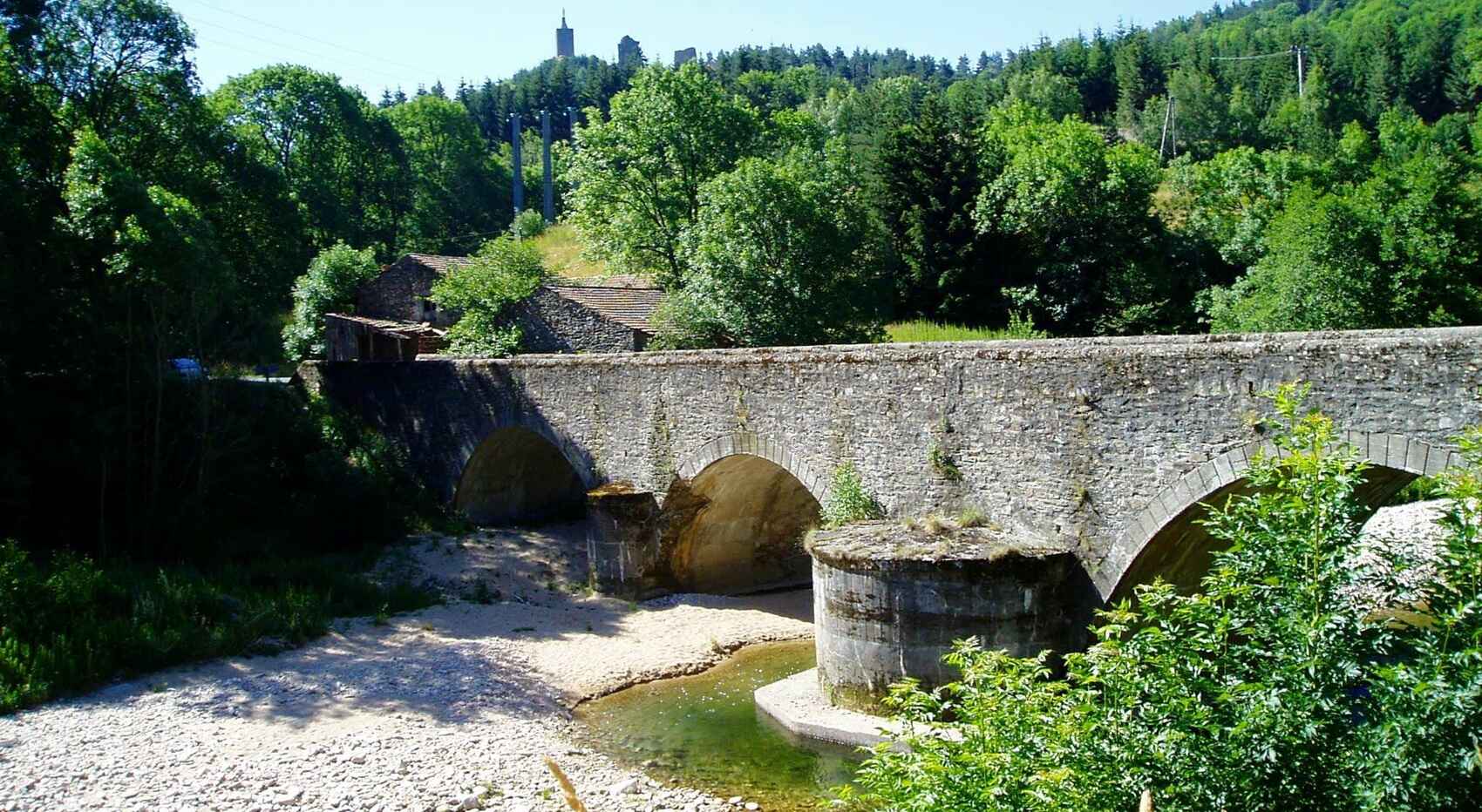
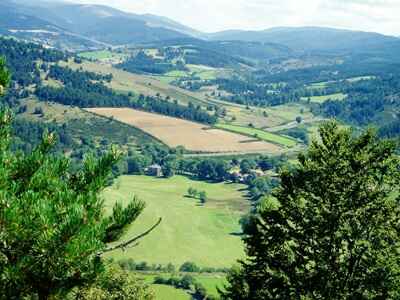 Born at the Moure de la Gardille, in the Margeride mountains, at an altitude of 1,503 meters, the Allier takes its source near Chasseradès.
Born at the Moure de la Gardille, in the Margeride mountains, at an altitude of 1,503 meters, the Allier takes its source near Chasseradès.
The Allier is a wild and untamed river that traverses the heart of France for 410 kilometers, until it joins the Loire at the Allier mouth. Along its course, it gives its name to a department that it crosses from south to north over 120 kilometers, offering varied and preserved landscapes, rich in biodiversity.
The Allier is a living river that breathes to the rhythm of its hydraulic tributaries, these secondary arms that serve as its lungs and nurseries for fish. These wetlands are also favored spots for fishing, attracting many enthusiasts to the banks of the Allier. However, the river is not easy to tame: wild and capricious, it weaves between the reliefs, often changing its bed and flow, creating islands, backwaters, meanders, and rapids... It can also be formidable during its floods, which have marked the history and memory of the riverside dwellers.
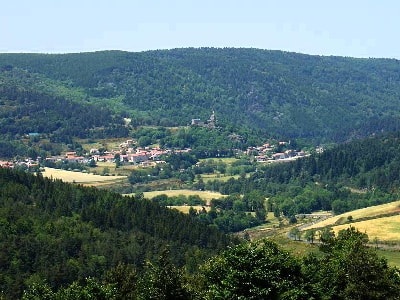 The Allier leaves Lozère after traveling about fifty kilometers in this department. Its crystal-clear waters, of exceptional fishery quality, shelter a population of shimmering brown trout, as well as a native population of common grayling, which are the pride of the river. At the time of spawning, the large male grayling display a dark and metallic coloration, characteristic of the "Allier" strain. In these cold and lively waters, the trout rarely exceeds 30 centimeters in the gorges, but it compensates for its modest size with extraordinary fighting spirit. Other species populate the Allier, such as minnows, loaches, bullheads, and barbel, as well as chub and dace, which are more abundant in the downstream area.
The Allier leaves Lozère after traveling about fifty kilometers in this department. Its crystal-clear waters, of exceptional fishery quality, shelter a population of shimmering brown trout, as well as a native population of common grayling, which are the pride of the river. At the time of spawning, the large male grayling display a dark and metallic coloration, characteristic of the "Allier" strain. In these cold and lively waters, the trout rarely exceeds 30 centimeters in the gorges, but it compensates for its modest size with extraordinary fighting spirit. Other species populate the Allier, such as minnows, loaches, bullheads, and barbel, as well as chub and dace, which are more abundant in the downstream area.
Since the destruction of the hydroelectric dam at Saint-Étienne-du-Vigan, the Atlantic salmon can once again ascend the Allier to its sources and find its ancestral spawning grounds at the height of Luc.
From La Bastide-Puylaurent, where the Allier is still just a discreet stream, the river gains strength and the valley widens. Until Langogne, 20 kilometers further down, its clear waters flow through a succession of calm areas and rapids, in the heart of a bed carved in granite that occasionally reveals basalt flows, witnesses of the Allier's entry into a zone of ancient volcanic activity.
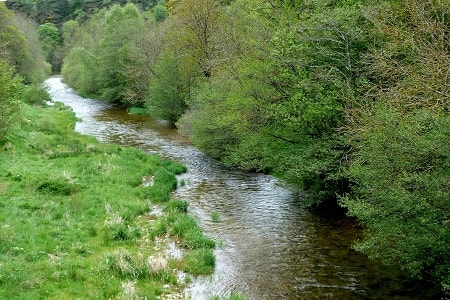 The banks, largely cleared, allow for fly fishing for beginners who, a bit more experienced, can try to lure the grayling, present from the hamlet of Rogleton downstream from La Bastide.
The banks, largely cleared, allow for fly fishing for beginners who, a bit more experienced, can try to lure the grayling, present from the hamlet of Rogleton downstream from La Bastide.
The Allier is a passage and nesting place for many bird species, notably raptors such as griffon vultures, black kites, common buzzards, peregrine falcons, and the Circus aeruginosus. You can also spot aquatic birds such as gray herons, cormorants, mallards, kingfishers, or wagtails. In the underbrush, you may hear the songs of tits, robins, thrushes, or great spotted woodpeckers.
The river is bordered by diverse vegetation, reflecting the diversity of soils and climates. On the causses, you will find plants adapted to drought, such as junipers, boxwoods, lavenders, or wild orchids. In the gorges, you will discover more humid species, such as willows, alders, ashes, or ferns. On the slopes, you will admire forests of beeches, oaks, pines, or firs.
 The salmon of the Allier belong to the Loire-Allier strain, the last in Europe to perform an incredible feat: traveling thousands of kilometers between Greenland and France. These majestic fish are born in the pure and wild waters of the Allier, where they grow and thrive during their early years. Then, they embark on a long migration to the Atlantic Ocean, where they find an abundance of food and reach sexual maturity. After several years, their irresistible instinct drives them to return to their home river to spawn.
The salmon of the Allier belong to the Loire-Allier strain, the last in Europe to perform an incredible feat: traveling thousands of kilometers between Greenland and France. These majestic fish are born in the pure and wild waters of the Allier, where they grow and thrive during their early years. Then, they embark on a long migration to the Atlantic Ocean, where they find an abundance of food and reach sexual maturity. After several years, their irresistible instinct drives them to return to their home river to spawn.
This extraordinary journey requires remarkable adaptation of their metabolism to transition from saltwater to freshwater, as well as resistance to multiple hazards such as overfishing, pollution, climate change, dams, or predators. Unfortunately, the Atlantic salmon is an endangered species, whose population has dramatically declined since the 1980s. In 2022, only 245 salmon were observed in the Allier by the National Wild Salmon Conservation.
Actions are being taken to protect and restore this emblematic species, such as the remodeling of certain dams to allow for salmon passage, or raising public awareness of the importance of preserving biodiversity and water quality. The Atlantic salmon is a fish that inspires admiration, due to its exceptional life cycle and adaptability. It is also a symbol of the history and culture of the people living along the Allier.
The Régordane Way, an ancient pilgrimage route, follows the valley of the Allier. On its fourth stage, it winds between Luc and La Bastide-Puylaurent. The landscape is marked by the Allier River and the Cévenol train, which we follow for the most part. The panoramas open up to the Cévennes, and the flora changes as we progress towards the watershed. Before arriving at La Bastide-Puylaurent, you can also take a detour to the Abbey of Notre-Dame-des-Neiges by following the GR®70 Stevenson path.
***
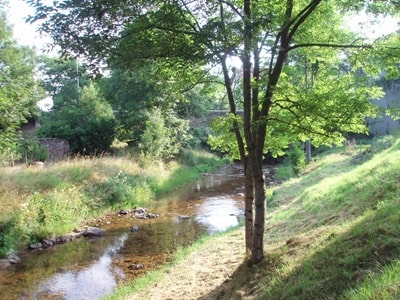 Once upon a time, on the winding banks of the Allier River, there was a fisherman named Étienne. Residing in the small village of Luc in Lozère, Étienne was known for his exceptional talent for catching salmon. Every morning, at dawn, he would rise before the sun peeked over the horizon, carefully preparing his rods and baits. The Allier River, with its crystal-clear waters and turbulent rapids, was a magical place. Salmon, with their silver scales, swam upstream to spawn, and Étienne knew all the secrets of their migration. He understood that to catch these majestic fish, one must respect the cycles of nature and have great patience.
Once upon a time, on the winding banks of the Allier River, there was a fisherman named Étienne. Residing in the small village of Luc in Lozère, Étienne was known for his exceptional talent for catching salmon. Every morning, at dawn, he would rise before the sun peeked over the horizon, carefully preparing his rods and baits. The Allier River, with its crystal-clear waters and turbulent rapids, was a magical place. Salmon, with their silver scales, swam upstream to spawn, and Étienne knew all the secrets of their migration. He understood that to catch these majestic fish, one must respect the cycles of nature and have great patience.
One day, while spring was in full bloom and wildflowers dotted the banks, Étienne settled in a spot he particularly loved, where the river formed a small, calm pool. He cast his line and sat on a stone, enjoying the sweet song of the birds and the murmuring of the water. After several hours of waiting, he felt a sharp tug on his rod. It was a salmon, the biggest he had ever seen! The fight was intense. The salmon, with all its strength, tried to escape, but Étienne was determined. He knew this fish would be a point of pride for him and his village.With a skill acquired over the years, he finally managed to bring the salmon out of the water. Awed by its beauty, Étienne decided to release it, realizing that the true magic of fishing lay not only in the capture but also in respecting nature and preserving its wealth.
Back in the village, he recounted his adventure to the local children, passing on his love for the river and its inhabitants. Thus, Étienne became not only a salmon fisherman but also a guardian of the Allier River, raising awareness about the importance of protecting this ecosystem. And so, each year, during the salmon season, the residents of Luc gathered to celebrate the river, honoring Étienne's tradition and ensuring that the beauty of the Allier would endure for future generations.
Former holiday hotel with a garden along the Allier, L'Etoile Guest House is located in La Bastide-Puylaurent between Lozere, Ardeche, and the Cevennes in the mountains of Southern France. At the crossroads of GR®7, GR®70 Stevenson Path, GR®72, GR®700 Regordane Way, GR®470 Allier River springs and gorges, GRP® Cevenol, Ardechoise Mountains, Margeride. Numerous loop trails for hiking and one-day biking excursions. Ideal for a relaxing and hiking getaway.
Copyright©etoile.fr